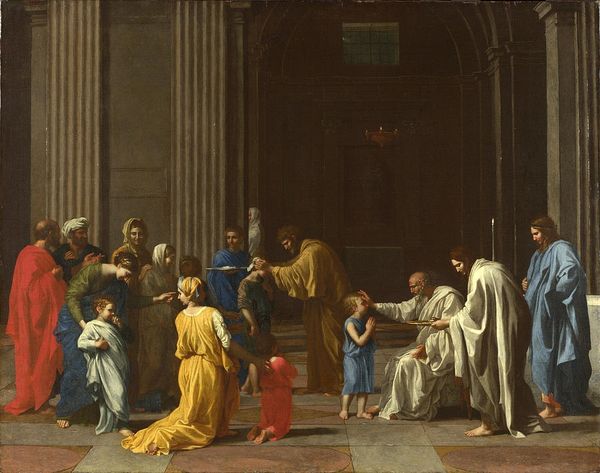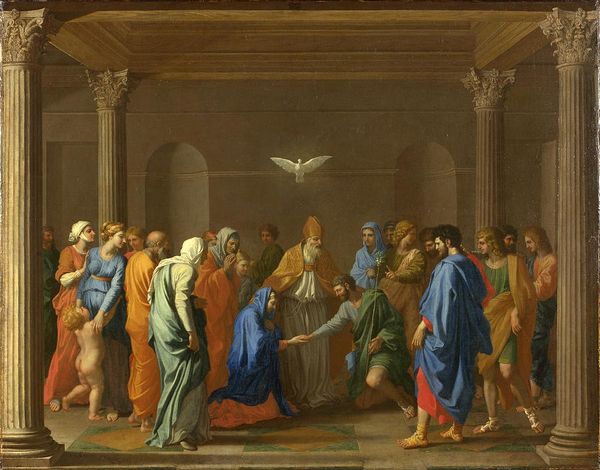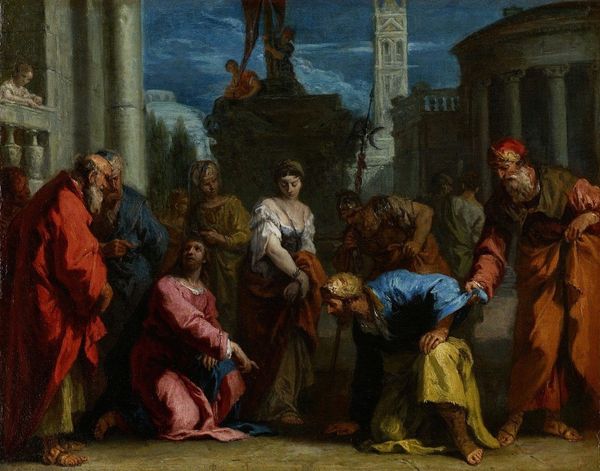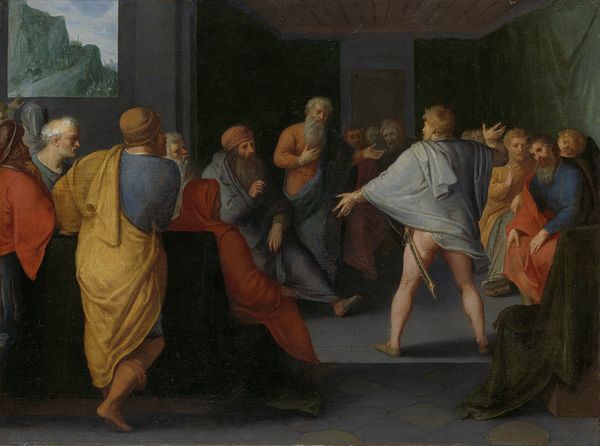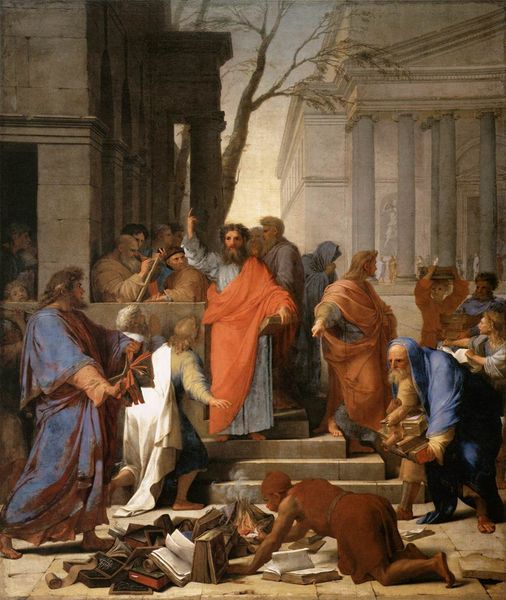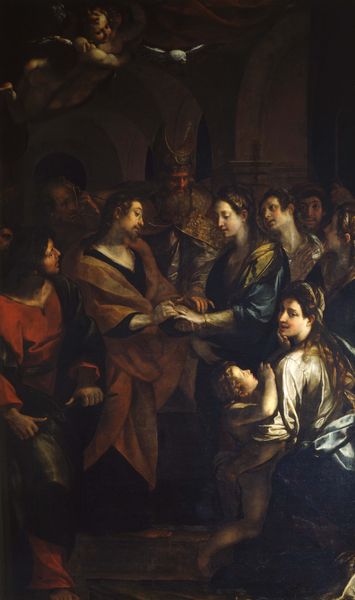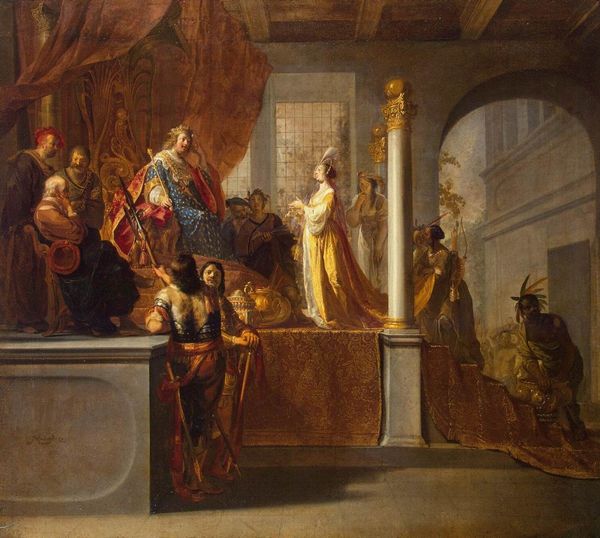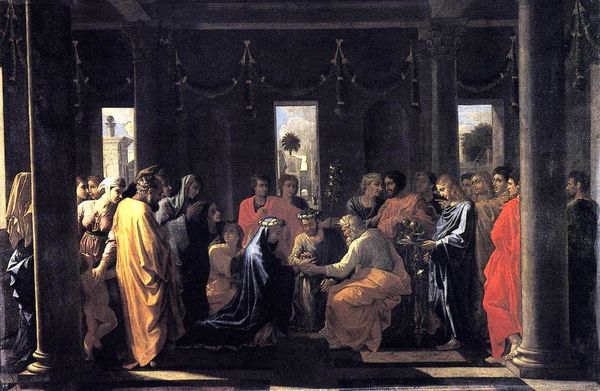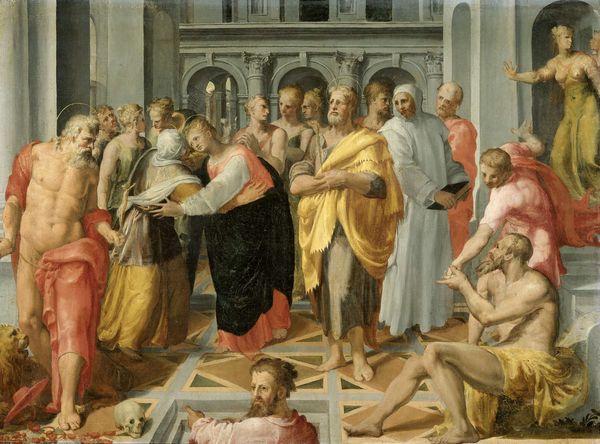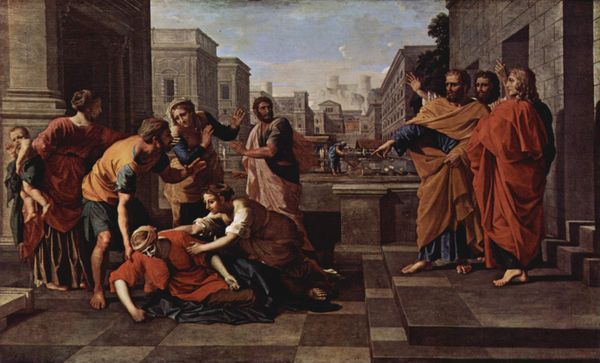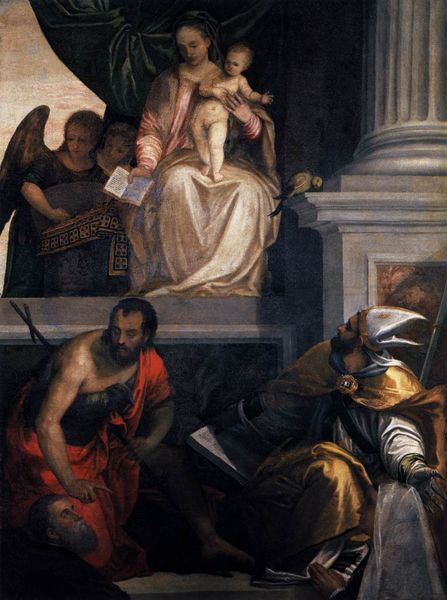
painting, oil-paint
#
portrait
#
allegory
#
narrative-art
#
baroque
#
painting
#
oil-paint
#
figuration
#
oil painting
#
christianity
#
history-painting
#
portrait art
Dimensions: 155 x 119 cm
Copyright: Public domain
Curator: Nicolas Poussin's 1655 painting, "Esther Before Ahasuerus," currently residing in the Hermitage Museum, offers us a fascinating look into baroque history painting. What's your initial take? Editor: Immediately, I’m struck by the theatrical drama – the strong diagonal composition leading to King Ahasuerus, contrasted with Esther's collapse. It’s a masterclass in staging. But the material aspect– those fabrics, particularly Ahasuerus's robe– how much would have been used and cost to create something that would have draped similarly? Curator: That's interesting. If you consider the scene as an allegorical moment, it's about the tension between divine law and royal power, illustrated through clothing. The finery is not just adornment, but evidence of power and access to certain goods; it proclaims Ahasuerus’ worldly authority, soon to be tested by Esther’s quiet piety. And look at her clothes in contrast. They speak volumes! Editor: Absolutely, the materiality also connects it to the social context of the time. Consider the pigment – ultramarine in her robe likely would’ve been processed by hand from Lapis Lazuli! Curator: Precisely! And let's consider the scepter: It’s a potent symbol. To whom would a craftsman have supplied the raw materials to produce this piece? The gold becomes more than precious material, morphing into evidence of ritual, lineage, authority... even judgment. The potential cost behind a royal sign. Editor: Right! Thinking about workshops and patronage shifts our focus from Poussin as a singular genius, instead to a collaborative, production-oriented world. We get so caught up in symbolism that it’s easy to lose sight of the value invested, both monetary and human, into the artwork. Curator: Perhaps both viewpoints are true – Poussin certainly harnessed those socio-economic factors in how the biblical story unfolds. The way he manipulates symbolic clothing even impacts the viewer! It can still evoke emotional response. The way a viewer from Poussin's time reads a given object or artistic expression would inevitably contrast with how people from our current epoch interpret symbolism, given our diverse upbringings. Editor: Definitely! It's a reminder that appreciating art isn't just about decoding symbols, but understanding the labor and systems that shaped it. Curator: A worthy point indeed! So, art functions not just as visual storytelling, but also as a repository of its socio-economic story. Editor: A sentiment with which I concur. Thank you!
Comments
No comments
Be the first to comment and join the conversation on the ultimate creative platform.

